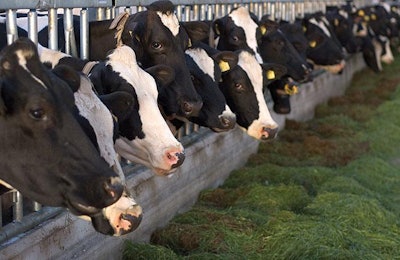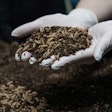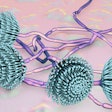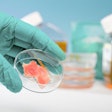
DSM Animal Health & Nutrition launches ‘We make it possible’ strategic sustainability initiative
“If not us, who? If not now, when?” These are the questions to answer as DSM Animal Health & Nutrition (AHN) kicks off its “We make it possible” strategic initiative, which hopes “to lead a robust and achievable transformation worldwide in sustainable animal protein production.” The ultimate goal, of course, is to aid in providing affordable and nutritious food to the world’s growing population.
While sustainability initiatives have become commonplace among multinational firms, during a call shortly before the launch of the program, I asked DSM ANH’s vice president of sustainability and business solutions, David Nickell, to describe why it is the right time to communicate the “We make it possible” mission to its customers.
“DSM has a very long, rich heritage in the sustainability arena, and that’s the basis of us operating as a purpose-led company, which is really the core of who we are,” he said. The initiative “comes after many years of investment in innovation and science aimed at providing real answers to some of the challenges in the industry. It is not marking a new beginning, but it’s a significant acceleration of our journey towards a more sustainable future.”
Aligned with five of the United Nation’s 17 Sustainable Development Goals (SDG), DSM’s “We make it possible” strategic initiative is driven by six sustainability platforms meant to tackle some of the major challenges facing animal agriculture.
Nickell outlined how the animal nutrition business can address these six critical issues:
- Improve the lifetime performance of farm animals: Without proper nutrition, welfare and health management, livestock production efficiency can decrease by as much as 33%. The Zero Hunger SDG aims to double the average productivity of animal agriculture by 2030. The crucial role of vitamin nutrition plays a large part in achieving this goal.
- Improve the quality of food (i.e., meat, milk, fish, eggs), while reducing food loss and waste: DSM supports the FAO’s Sustainable Development Goal 12.3, which has the ambition to reduce food loss and waste by 50% by 2030. For example, food loss and waste reductions can be achieved by improving the vitamin nutrition of animals. “The right level of vitamin E, for example, increases the shelf life of fresh meat by three to six days and, frozen meat, two to three months and reduces discoloration so less is thrown away,” he said, also noting that vitamin D nutrition in layers can increase egg shell strength, which reduces breakages and addresses the food loss and waste issue.
- Reduce emissions from livestock: Feed additive solutions can be used to reduce methane, nitrogen and phosphorus emissions in animal production.
- Make efficient use of natural resources: Getting more out of less, particularly in raw material usage, is a key way to preserve, protect and best utilize natural resources. In feed production, for example, feed enzymes enable producers to get by with using less feed inputs to grow animals, improving feed conversion ratios, ingredient digestibility and reducing reliance on imported commodities, such as soy, to enable greater use of local raw materials, Nickell said.
- Reduce the reliance on marine resources: According to DSM, approximately 16 million tons of oily fish, or 17% of the world’s fisheries, are captured and processed into about 5 million tons of fish meal and 1 million tons of fish oil, of which a mere 200,000 tons are made up by the important omega-3 fatty acids EPA and DHA. And about 75% of this is used in aquaculture feeds.
There’s a finite amount of fish oil available to the aquaculture industry worldwide, Nickell explained, and without new technologies, the aquaculture industry will struggle to grow. Sustainable production of omega-3 EPA and DHA through alternative technology can supplement this essential ingredient for aquaculture species.
“By taking the marine algal cell from the from the ocean marine algae and cultivating those, instead of having to harvest wild fish and extract the fish oil, allows the industry to bypass that process. We’re able to produce omega-3 EPA and DHA through a fermentation process,” he said. - Help tackle antimicrobial resistance: By improving nutritional health, livestock and poultry producers can reduce or eliminate the use of antibiotic growth promotion — or the prophylactic use of antibiotics. Nickell points to additive products that can improve gut health, which contributes to the robustness of farm animals and contributes to antibiotic elimination.
DSM is delivering its sustainability message to its customers and partners in hopes that they adopt and implement this mindset in the field.
“Sustainability is very nuanced down to the [individual] farm, that’s where the footprint or animal production is,” he explained. “It means working closely with the customers understanding the customer’s journey, listening to them, and bringing forward relevant solutions for them. It doesn’t come down to one person or team or department — I’d say it’s down to all members of DSM, our customers and our partners in the value chain to help make this make this possible.”
To learn more about the program, visit www.dsm.com/wemakeitpossible.


















